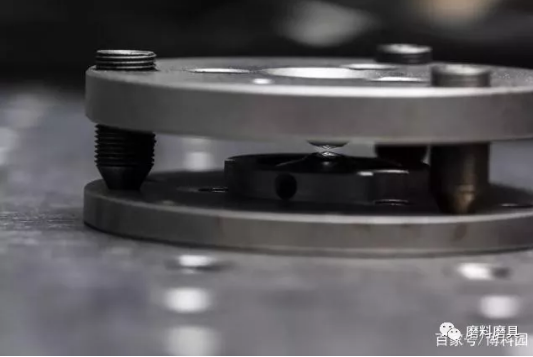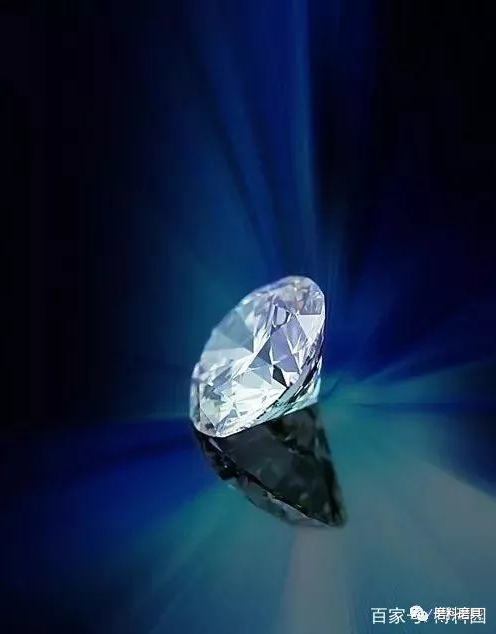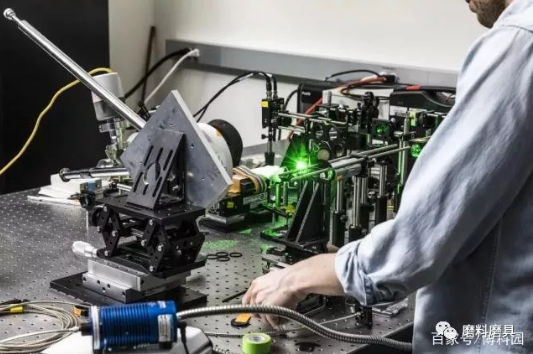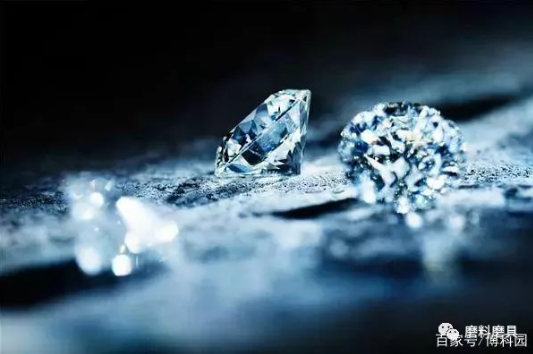Scientists are very interested in diamonds – not the kind used to decorate jewelry, but tiny types that are thinner than human hair. These so-called "nano-diamonds" are almost entirely composed of carbon. However, by introducing other elements into the crystal lattice of nanodiamonds (a method known as "doping"), researchers can obtain features that are useful in medical research, computational, and the like. In a paper published in Science Advances on May 3, 2019, the University of Washington, the US Naval Research Laboratory, and the Pacific Northwest National Laboratory ( Researchers at the Pacific Northwest National Laboratory announced that they can use very high pressures and temperatures to dope nanodiamonds.

In this way, the team combined nanodiamonds with silicon to give the diamonds a deep red glow, a feature that would make them useful for imaging cells and tissues. The team found that the method can also dope nanodiamonds with argon. Argon is a rare gas that is a non-reactive element associated with strontium in balloons. Nanodiamonds doped with this element can be applied to quantum information science, a rapidly expanding field of quantum communication and quantum computing. Peter Pauzauskie, an associate professor of materials science and engineering at the University of Washington and a researcher at the Pacific Northwest National Laboratory, said that the method deliberately incorporates other elements into the diamond nanocrystals by carefully selecting the molecular starting materials used in the synthesis process.

A side view of a diamond anvil cell used to create a pressure of more than 15 gigapascals between two synthetic diamonds near the center of the cell. Image: Mark Stone/University of Washington is also doped with nano-diamonds, but ion implantation, etc., but this process often destroys the crystal structure, and the introduced elements are placed at random, limiting performance and application. Here, the researchers decided not to do the doping after the nanodiamond synthesis. Instead, the molecular components are doped with the elements they want to introduce to make nanodiamonds, and then high temperature and high pressure are used to synthesize nanodiamonds containing these elements. In principle, it's like making a cake: adding sugar to a batter is much simpler and more effective than adding sugar after baking. The research team's starting point for studying nanodiamonds is a carbon-rich material (similar to charcoal, says Paulsky). The researchers spun the material into a lightweight porous matrix called an aerogel.

The carbon aerogel is then doped with a silicon-containing molecule called tetraethyl orthosilicate, which is chemically integrated into the carbon aerogel. The researchers sealed the reactants in a gasket of a diamond anvil cell, which produced a pressure of up to 15 gigapascals in the gasket. For reference, 1gigapascal is about 10,000 atmospheres, or 10 times the depth of the ocean. In order to prevent the aerogel from being crushed under such extreme pressure, argon is used as the pressure medium. After loading the material to high pressure, the researchers used a laser to heat the battery above 3,100 degrees Fahrenheit, more than one-third of the surface temperature of the sun.

In collaboration with E. James Davis, an honorary professor of chemical engineering at the University of Washington, it was discovered that solid argon melts at this temperature to form a supercritical fluid. Through this process, the carbon aerogel is converted into nanodiamonds containing silicon-based doped molecules to form light-emitting point defects. The deep red light emitted by nanodiamonds has a wavelength of about 740 nm, which is useful in medical imaging. Nanodiamonds doped with other elements can emit other colors. You can throw a dart on the periodic table. As long as the element we hit is soluble in diamonds, we can intentionally synthesize nanodiamonds in this way, which can produce a wide range of nanodiamonds, which can be imaged. The purpose is to emit different colors.

The University of Washington postdoctoral researcher Matthew Crane operated a laser-heated high-pressure diamond anvil cell gasket that allowed the temperature to exceed 3100 degrees Fahrenheit, more than one-third of the temperature indicated by the sun. Photo: Mark Stone/University of Washington can also use this molecular doping method to create more complex point defects with two or more different dopant atoms, including new defects that have never been produced before. Surprisingly, the researchers found that their nanodiamonds also contained two other elements that they did not intend to introduce – argon used as a pressure medium and nitrogen from the air. Like the silicon that the researchers intend to introduce, the nitrogen and argon atoms are fully integrated into the crystal structure of the nanodiamond. This marks the first time scientists have used high temperature and high pressure assembly technology to introduce rare gas elemental argon into the nanodiamond lattice structure. It is not easy to force unreacted atoms to bind to other substances in the compound.

This is an accident, a complete surprise, but the fact that argon is incorporated into nanodiamonds means that this method is likely to be used to make other point defects that may be used in quantum information science research. Researchers hope to deliberately dope another rare gas helium next to nanodiamonds for applications in quantum communication and quantum sensing. The research team's approach can also help solve a mystery of the universe: nanodiamonds are found in outer space, and certain substances in outer space (such as supernovae or high-energy collisions) inject inert gases into them. Although Paulsky and the team developed a method of doping nano-diamonds on Earth, its findings could help scientists understand which types of extraterrestrial events trigger cosmic doping away from the Earth.
Aluminum Casting Machinery Parts
Aluminum Casting Machinery Parts,Aluminum Machinery Parts,Agricultural Machinery Parts,Machinery Spare Parts
NINGBO AIKEHAN METAL PRODUCT CO.,LTD , https://www.diecastingsupplier.com